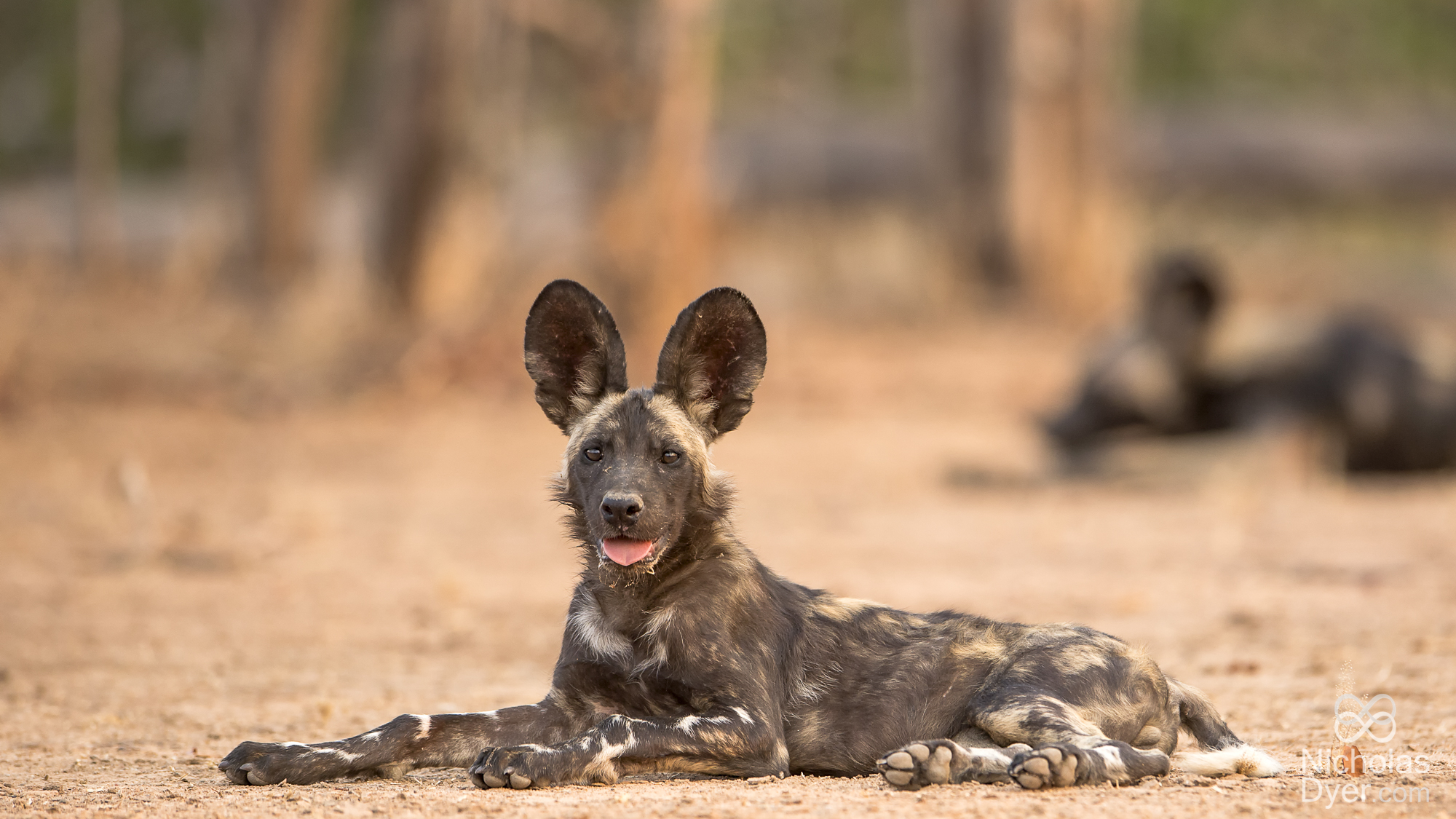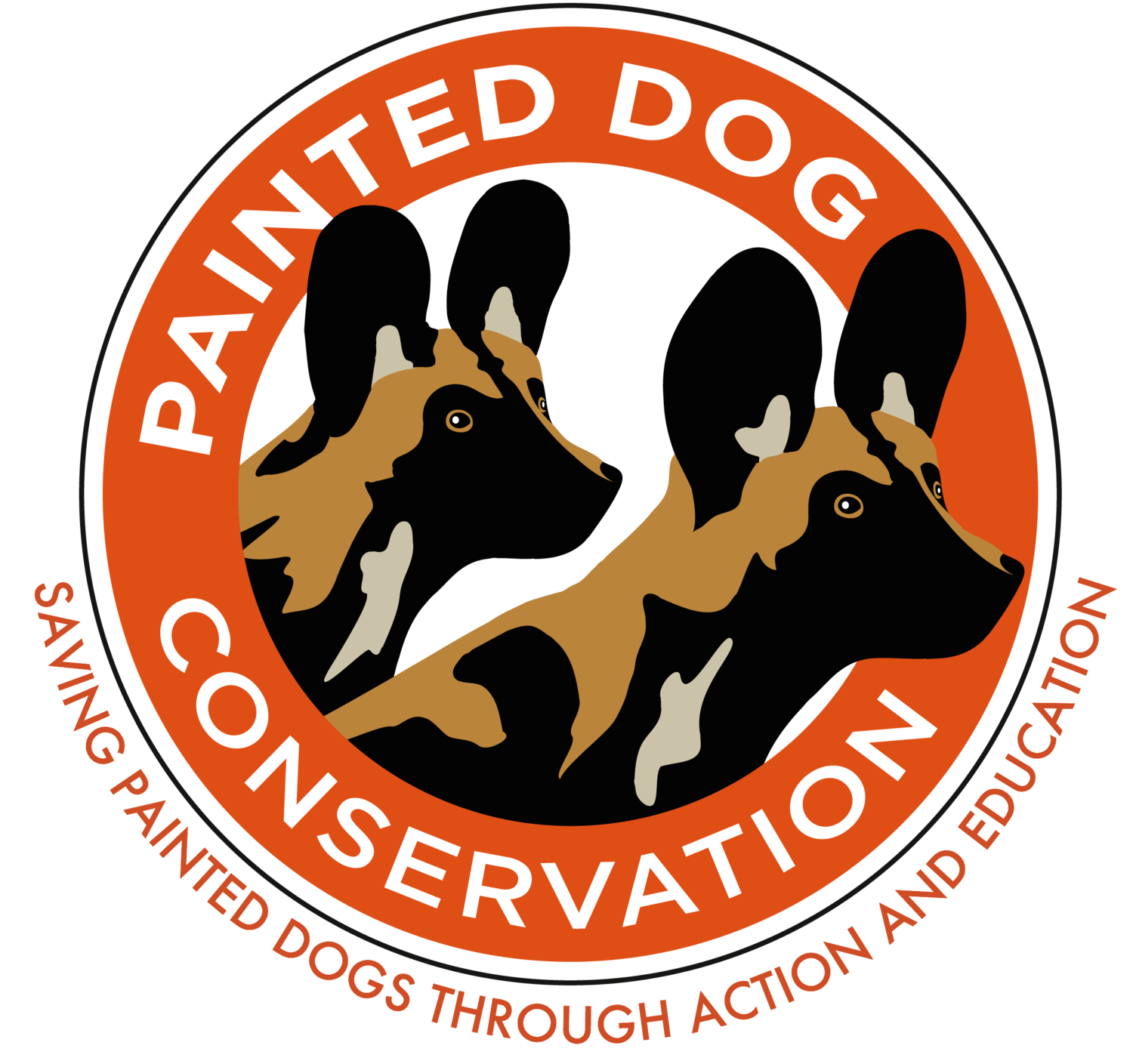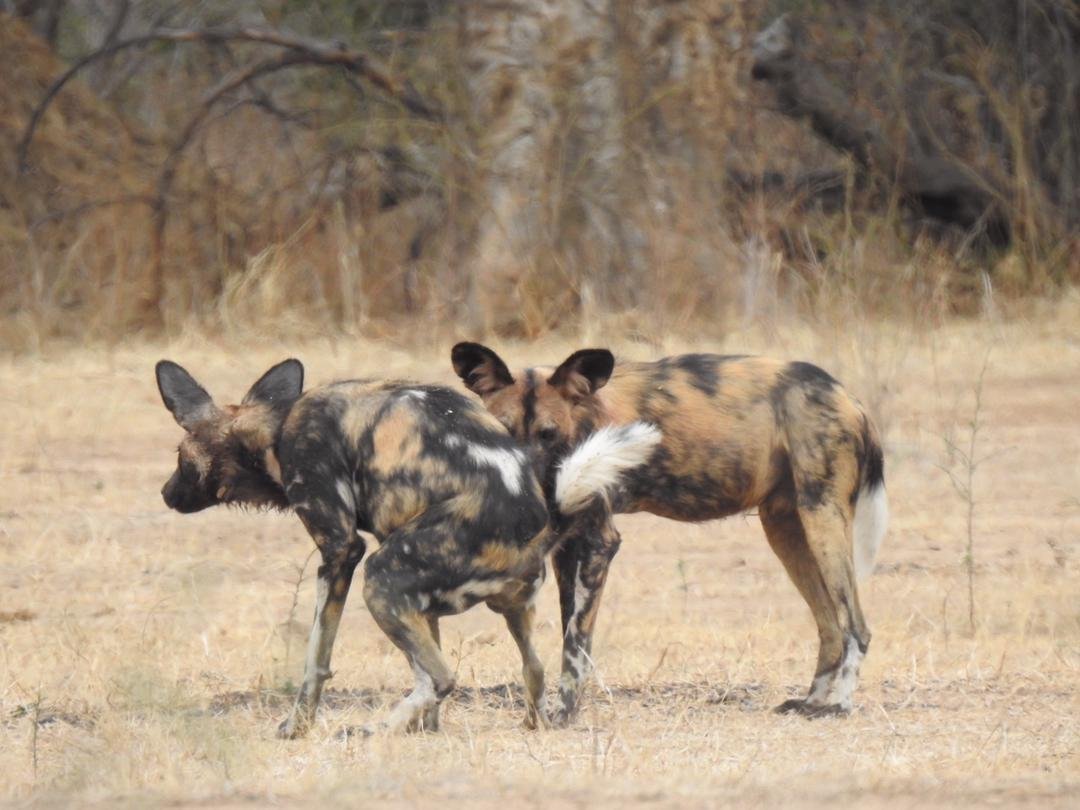
News Updates
PDC Annual Report 2023
2023 was a year when we really saw the impact of the work we have undertaken during the past 25+ years. For the first time ever we have seen three if not five packs of painted dogs utilising the buffer zone in our core operating area. Three packs denned in the area and we deployed the full extent of our resources to try and protect them, which was successful on the whole but not without tragedy.
2023 was a year when we really saw the impact of the work we have undertaken during the past 25+ years. For the first time ever we have seen three if not five packs of painted dogs utilising the buffer zone in our core operating area. Three packs denned in the area and we deployed the full extent of our resources to try and protect them, which was successful on the whole but not without tragedy.
Notes from the Field: Denning and Inbreeding
The tale of the Mpindothela has taken a better twist this time around. Clara, the pack's alpha female, now has pups, and the pack is denning. The Mpindothela pack is a merger of the four males from the Mathathela pack, which used to roam near our headquarters in Dete and the four remaining females of the notorious Mpindo pack.
Clara earlier in the year
The tale of the Mpindothela has taken a better twist this time around. Clara, the pack's alpha female, now has pups, and the pack is denning. The Mpindothela pack is a merger of the four males from the Mathathela pack, which used to roam near our headquarters in Dete and the four remaining females of the notorious Mpindo pack. The pack formed when we released the Mpindo females to join the waiting males outside our Rehabilitation facility last year.
Looking back, since the pack was formed, the Mpindothela lost its alpha male Khule to a lion attack and a promising female MaDube to a road accident. Their future looked bleak following these incidents. The pack regrouped well, and now with pups comes new hope for the pack and the painted dog population in Hwange.
Pregnant Clara feeding with her pack
In Mana Pools, Boas, the son of Taku and Tafara (born 2020) of the Rucomecci pack, has joined the Nyamepi pack with a male we believe to be his brother, Dickson. In the video below shot by our researchers in Mana Pools, Boas and alpha female Whisky are mating.
Boas and Whisky Mating
While, on the one hand, it's good to see "new" males join the Nyamepi pack after the disappearance of alpha male Gamma in early May and the other four males, it is still a concern because Taku and Whisky, are sisters. So Boas is a close relative, indeed nephew of Whisky.
This continues a worrying trend in Mana pools of an apparent lack of "new blood" migrating into the area.
Boas and Whisky
Keeping Up with the Dogs
The dog stories for the period are a mix of both good and bad news. Most of you would know about the Mpindothela pack, a merger of the four males from the Mathathela pack which used to roam near our headquarters in Dete and the four remaining females of the notorious Mpindo pack. The pack was formed when we released the Mpindo females to join the waiting males outside our Rehabilitation facility last year.
A happy pack of painted dogs by Nicholas Dyer Photography
The dog stories for the period are a mix of both good and bad news. Most of you would know about the Mpindothela pack, a merger of the four males from the Mathathela pack which used to roam near our headquarters in Dete and the four remaining females of the notorious Mpindo pack. The pack was formed when we released the Mpindo females to join the waiting males outside our Rehabilitation facility last year.
Tragedy struck when Chenai, the seeming alpha female, was run over and Peace, one of the males, disappeared. This was quickly followed by the death of the male Khule and suddenly the pack was only five in number.
The Mpindothela pack
The pack separated soon after Khule’s death. The females Madube and Clara spent a lot of time near our Rehab facility, making frequent ‘visits’ to villages nearby to predate on goats. Despite the losses we are very delighted to report that the community responded positively. They did not kill or harm the dogs. We worked closely with the communities involved, Mabale, Dopota, Lupote and Magoli, as well as the community anti-poaching volunteers to safeguard livestock as well as keep the dogs safe.
A fellow stakeholder, Soft Foot Alliance has been piloting an earth regeneration project in a small area of Mabale and has been promoting group herding and bomas for livestock. It is interesting to note that none of the households partaking in this Soft Foot Alliance’s program lost goats to painted dogs or any livestock to any wildlife.
Community Ant-poaching Volunteers helping our Research and Anti-poaching team
In light of this and with some insights from the Tusk Symposium that we recently took part in, which emphasized working together to build resilience in conservation, we are exploring opportunities and possibilities of collaborating with Soft Foot Alliance. The aim is to expand their programs outside of Mabale village into all the villages in our core operating area. Their programs are proving to be effective in reducing human-wildlife conflict and we believe we can do more for both painted dogs and the community by working together with Soft Foot Alliance.
The Batsha pack
In Sinamatela, our base tracker Washington Moyo reported a new pack composed of two females and two males which, he named the Batsha pack, meaning ‘the new pack’. He sighted the pack for the first time in the Kashawe concession in Sinamatela. Upon investigation, he discovered that the two males are Lifa and Dela, once with the Lukodet pack and they had dispersed in 2021. The two females, Zizi and Rocco, are also dispersals from one of the well-known packs, the Bumbusi pack. A family has been formed and we are happy with this new possible breeding unit that will add to the Hwange National Park painted dog population.
The Batsha pack
25 Years and Counting...
It seems incredible to think that I’ve been committed to creating an environment where painted dogs can thrive for 25 years now….and counting. I first came out to Zimbabwe in 1997 to see what Greg Rasmussen and his then Painted (Hunting) Dog Research Project were doing. It was the proverbial one-man-band or put another way one man and his dog(s).
Peter Blinston - Executive Director, Painted Dog Conservation
It seems incredible to think that I’ve been committed to creating an environment where painted dogs can thrive for 25 years now….and counting.
I first came out to Zimbabwe in 1997 to see what Greg Rasmussen and his then Painted (Hunting) Dog Research Project were doing. It was the proverbial one-man-band or put another way one man and his dog(s).
I had actually met Greg in Falmouth in January 1997, but the beginning of the journey goes back to June 1996 when I read an article in the Royal Geographical Magazine. The article gave me David Shepherd Foundation as a contact and Mel Shepherd gave me a fax number in Zimbabwe. I guess the rest is history!
Since then I have maintained a single focus to build a robust organisation that is equipped to tackle the multiple challenges of front line conservation.
Chief Nelukoba-Dingani
Key to that has been developing a strong working relationship with our local Chief, Chief Nelukoba, who I first met in 1998. And he has been a resolute spokesperson ever since.
At this stage, I was already talking of the need to create structure and met with lawyer Kevin Arnott in Harare to discuss the options. Soon after that I met Jerry Gotora at a Wildlife Society AGM in Kwekwe and told Greg that Jerry needs to be our Chairman. Happily, Jerry agreed and like Chief Nelukoba he has been a combination of rock and guiding hand on our Board ever since, A Board that has necessarily evolved to also comprise Everisto Marowanyanga as Secretary, Moyra Thain as Treasurer and Chief Nekatambe.
Jealous has been another ever-present and he is also closing in on 25 years and counting…. I remember meeting him for the first time in May 1998, he was cutting the grass at the house we rented. I went into the field with Greg, where we cut or rather attempted to cut a pathway to the den of a painted dog pack. In the evening I was nursing my tattered, blistered, thorn torn hands. In the morning I told Jealous to join us because I knew for sure that he would be better at wielding an axe than me.
Peter Blinston and Senior Tracker Jealous Mpofu in Mana Pools
It was the start of a friendship and trust that has also stood the test of time and a day in the field with him, tracking dogs is a privilege.
The threats to the painted dogs are many. Loss of quality habitat sums it up but it is way more complex than that.
Talk of elephant populations and poaching dominates the landscape. Hwange National Park, where I live, is home to an estimated 40,000 elephants and 200 painted wolves. It is obvious to me which species will win the race to extinction. A race no species wants to be in let alone win.
Peter Blinston darting a painted dog
Immediate action is required as well as a long term strategic approach. I believe that the individual is the key. Changing an individual’s life, be it an individual painted dog or a person can and does make a difference. A life-changing difference. And it’s done, one day at a time, one life at a time. There is no quick fix. There is no simple answer or remedy to saving an endangered species.
I have been challenged physically and emotionally, so many times in the past years. On more occasions than I care to remember I have found myself asking just how much I have to give. Knowing that the answer is always more, more, more.
Peter Blinston, Tracker Washington Moyo and Sam Blinston collaring a painted dog
Even after all the literal, sweat blood and tears that have flown in the past 25 years, I know that the future is still no more certain or secure than it was twenty years ago.
I remain as committed as ever, to building a team, equipped physically and mentally to take on the challenges that lie ahead. The team are all local people, literally, the majority of the 66 staff are from the local villages that surround us. Their development is key to creating the capacity and robustness needed so that Painted Dog Conservation endures as an organisation beyond any one individual
Peter Blinston and Painted Dog Conservation Operations Manager David Kuvawoga
The hill is steep, some say it’s too steep to climb, but I say climb it in your own way. Above all, be determined to reach the top.
Such is life on the front line of conservation, where the future is so uncertain.
Field update: Rabies scare
As often with being on the frontline of conservation and dealing with wildlife, every situation is unpredictable, Francie walked into the waterhole leaving Peter with no choice but to follow her. He went into the water to be near her and watched her until she showed signs the drugs were working and then grabbed her. Thus making sure her mouth and nose didn’t go underwater at any time.
Following an alarming report of a wounded painted dog yesterday, our Executive Director, Peter Blinston and Senior Tracker Jealous Mpofu headed out to the location. They assessed the situation and identified the painted dog as Francie, the alpha female of the Ngweshla pack. Acting out of sense of purpose to help save a dog in need, Peter darted the painted dog, approximately 40m from the waterhole.
As often with being on the frontline of conservation and dealing with wildlife, every situation is unpredictable, Francie walked into the waterhole leaving Peter with no choice but to follow her. He went into the water to be near her and watched her until she showed signs the drugs were working and then grabbed her. Thus making sure her mouth and nose didn’t go underwater at any time.
The late Francie, alpha female of the Ngweshla pack ID file.
She was full of bite marks, a trait consistent with rabies. They took her to our Rehabilitation Facility where she was quarantined and later died. We have so far sent samples to a veterinary lab to confirm the disease.
While the biggest threats to painted dogs come from humans in form of poaching and expanding human settlement that reduces suitable habitat for them and their prey, they are also susceptible to diseases such as rabies and distemper from domestic dogs.
Given their social nature, a disease such as rabies can permeate an entire group through just one dog, and wipe out a whole pack. Mindful of this, identifying and containing the disease is an integral part of our work.
Peter’s Landrover overheated while was searching for the rest of members of Ngweshla pack.
This morning, Peter headed out into Hwange National Park in search of the rest of the Ngweshla pack to see if they need to be brought in as well. Unfortunately, his Landrover engine overheated. Jealous and the other team are still on the job.
Your support makes it possible for us to act when it matters to save the endangered painted dog.
#conservationonthefrontline #savethepainteddog #rabiesisakiller #francie #ngweshla #pdc
























